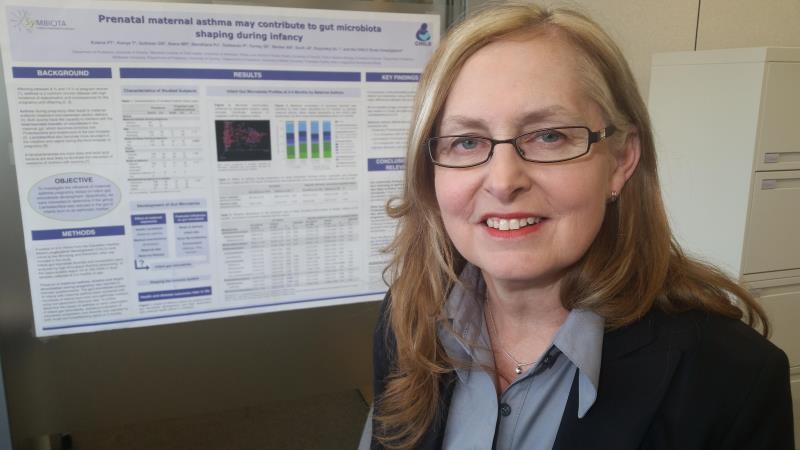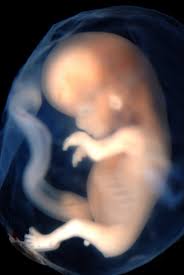
Anita Kozyrskyj, professor in the Department of Pediatrics at the University of Alberta
When is a baby's microbiome first established? Is it at birth when an infant is exposed to its mother's microbes and the environment? Or is it even earlier?
A review paper led by Anita Kozyrskyj, a professor in the Faculty of Medicine & Dentistry's Department of Pediatrics, summarizes the growing evidence that human microbial colonization begins during pregnancy, and highlights the role of intrauterine microbes in shaping the fetal immune system.
 The paper, "Microbial programming of health and disease starts during fetal life," was recently featured in TIME magazine online and published as part of a collection of ground-breaking microbiota reviews in Birth Defects Research Part C: Embryo Today. Senior author Kozyrskyj-also an AllerGen investigator and co-investigator for AllerGen's Canadian Healthy Infant Longitudinal Development (CHILD) Study-was interviewed by TIME.
The paper, "Microbial programming of health and disease starts during fetal life," was recently featured in TIME magazine online and published as part of a collection of ground-breaking microbiota reviews in Birth Defects Research Part C: Embryo Today. Senior author Kozyrskyj-also an AllerGen investigator and co-investigator for AllerGen's Canadian Healthy Infant Longitudinal Development (CHILD) Study-was interviewed by TIME.
"This paper examines the data that support the theory that the fetal gastrointestinal tract is not as sterile as previously thought, and that small amounts of bacteria are present in the placenta, amniotic fluid and cord blood," says Dr. Kozyrskyj. "The source of microbes in the fetus is unclear, but it is likely that they gain access to the intrauterine environment from the vagina or through the mother's blood stream, which suggests that a mother's health and diet are important to her infant's microbiome."
The paper's first author, Petya Koleva, first author of the paper and a postdoctoral fellow in Kozyrskyj's lab, commented on results from a pilot study highlighted in the review. "We collected data and meconium (first stool) samples from 57 children participating in the Winnipeg site of the CHILD Study," says Dr. Koleva. "We found that 23 per cent of meconium specimens were colonized with bacteria, which supports the notion that seeding of the microbiome begins before birth."
"Our next steps are to publish findings on how maternal prenatal health in the CHILD Study cohort, such as asthma status, affects microbial composition of meconium as a potential risk factor for future asthma in offspring," adds Kozyrskyj.